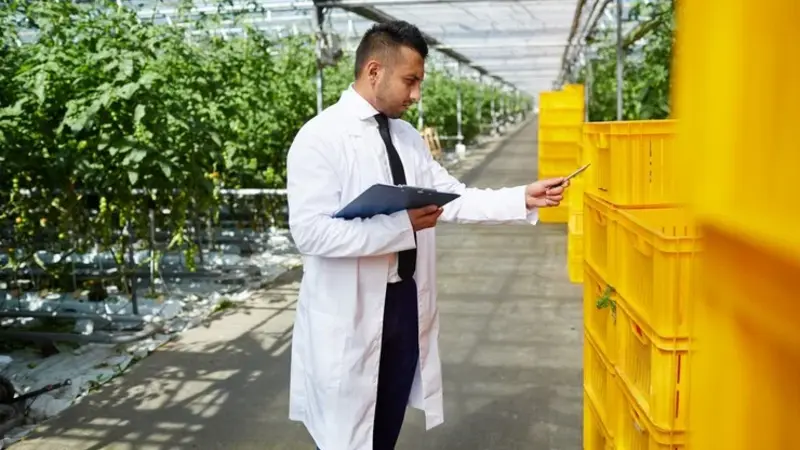In an era where overfishing and environmental degradation threaten the delicate balance of marine ecosystems, the role of technology in conserving our oceans has never been more critical.
Among these technological advancements, aquaculture monitoring systems stand out as a beacon of hope, offering a sustainable path forward in marine conservation and seafood production.
These systems, often hailed as the “Guardians of the Seas,” are about safeguarding aquatic life and ensuring food security for future generations.
The Challenge at Hand
The world’s oceans are under unprecedented pressure from human activities. Overfishing, habitat loss, and pollution have led to a significant decline in marine biodiversity.
In this context, aquaculture, or fish farming, emerges as a viable solution to meet the global demand for seafood without further depleting wild fish stocks.
However, aquaculture faces challenges, including disease outbreaks, environmental impact, and sustainable feed sources. This is where aquaculture monitoring systems come into play.
The Role of Aquaculture Monitoring Systems
Aquaculture monitoring systems utilize various technologies, including sensors, drones, and satellite imagery, to collect and analyze data on water quality, fish health, and environmental conditions.
This information is crucial for managing aquaculture operations effectively and minimizing their ecological footprint. By providing real-time data, these systems enable farmers to make informed decisions, such as adjusting feeding rates to reduce waste or detecting early signs of disease to prevent outbreaks.
Ensuring Sustainable Practices
One of the key benefits of aquaculture monitoring systems is their ability to promote sustainability. By closely monitoring environmental parameters, these systems help ensure that aquaculture operations do not exceed the carrying capacity of their surroundings.
This is vital for preventing issues like oxygen depletion and nutrient buildup, which can lead to harmful algal blooms and other ecological disturbances.
Furthermore, by optimizing feeding practices and improving fish health, these systems reduce the reliance on wild-caught fish for feed, thereby supporting the conservation of natural fish populations.
Advancements in Technology
Recent advancements in technology have significantly enhanced the capabilities of aquaculture monitoring systems.
Artificial intelligence (AI) and machine learning algorithms can now process vast amounts of data to predict potential problems and suggest optimal management strategies. For example, AI can analyze patterns in fish behavior to detect early signs of stress or disease, allowing for timely interventions.
Additionally, innovations in sensor technology have made it possible to monitor a wide range of parameters, from water temperature and pH levels to dissolved oxygen and salinity, with unprecedented accuracy and efficiency.
Among the innovative sensor technologies amplifying the effectiveness of aquaculture monitoring systems, ultrasonic level sensors deserve special mention. These sensors provide precise measurements of water levels, which is crucial for maintaining optimal conditions in fishponds and tanks.
By using sound waves to detect the water’s surface, ultrasonic level sensors can accurately monitor the amount of water, ensuring that environments are neither too low to stress the aquatic life nor too high to cause spillage and waste.
This level of precision is not only vital for the well-being of cultured species but also for the conservation of water resources, marking another step forward in the pursuit of sustainable aquaculture practices.
The Human Element
While technology plays a crucial role, the success of aquaculture monitoring systems also depends on the people behind them. Skilled professionals, including marine biologists, environmental scientists, and aquaculture experts, areessential for interpreting data and applying it effectively.
Training and education are thus critical components of implementing these systems, ensuring that aquaculture operators have the knowledge and skills required to use technology responsibly and sustainably. If you need other information Contact Us for more details.
Looking Ahead
The future of aquaculture monitoring systems looks promising, with ongoing research and development aimed at further improving their effectiveness and accessibility.
One exciting area of exploration is the integration of these systems with renewable energy sources, such as solar and wind power, to create self-sustaining aquaculture operations that have minimal environmental impact.
Additionally, efforts are underway to make these technologies more affordable and user-friendly, enabling their adoption by small-scale and artisanal fish farmers around the world.
Conclusion
Guardians of the Seas, aquaculture monitoring systems embody the synergy between technology and environmental stewardship. By enabling sustainable aquaculture practices, these systems not only protect marine ecosystems but also contribute to global food security.
In the face of growing environmental challenges, the continued innovation and adoption of aquaculture monitoring technologies provide a beacon of hope for the preservation and thriving of our planet’s precious aquatic resources.
